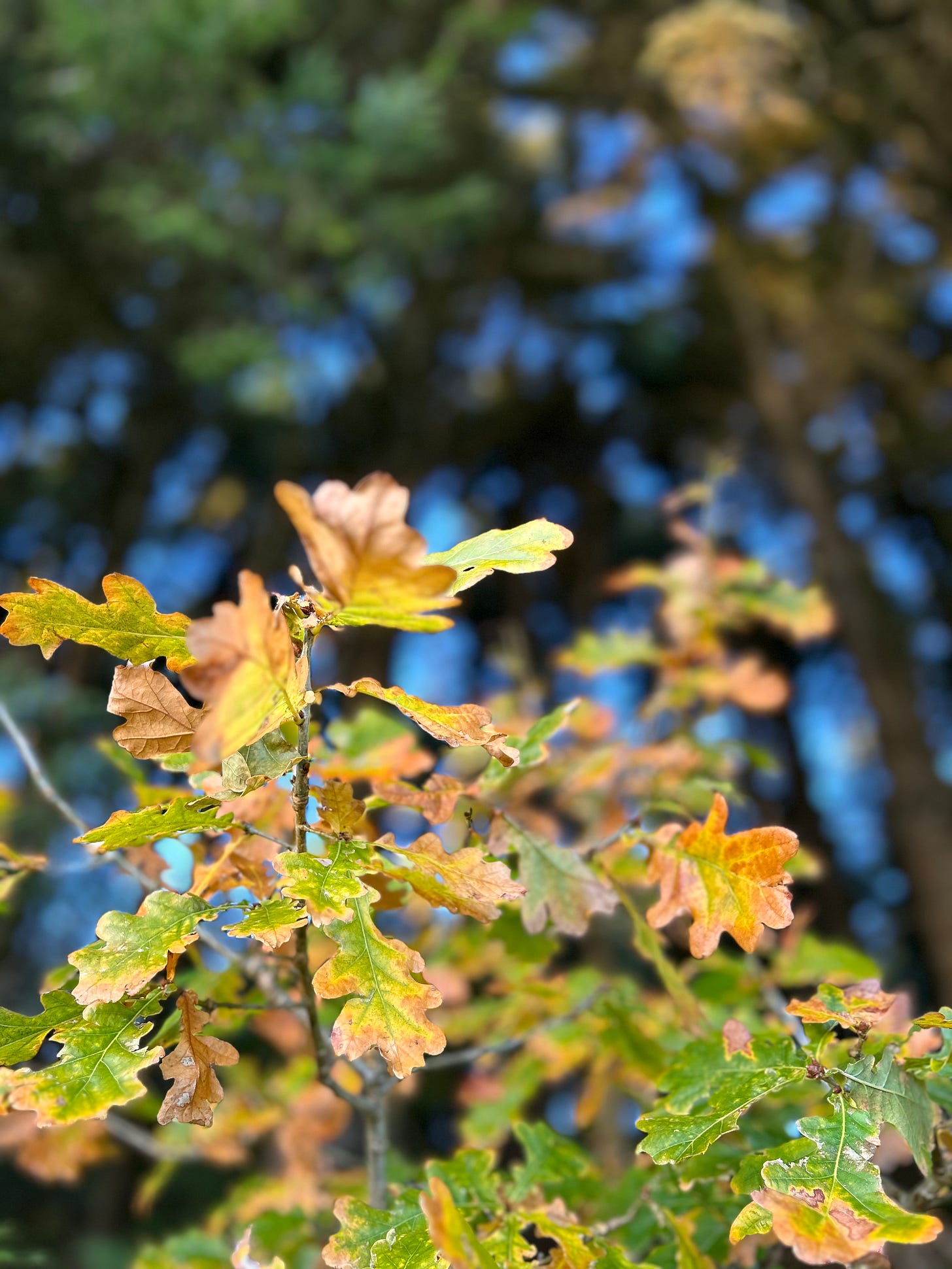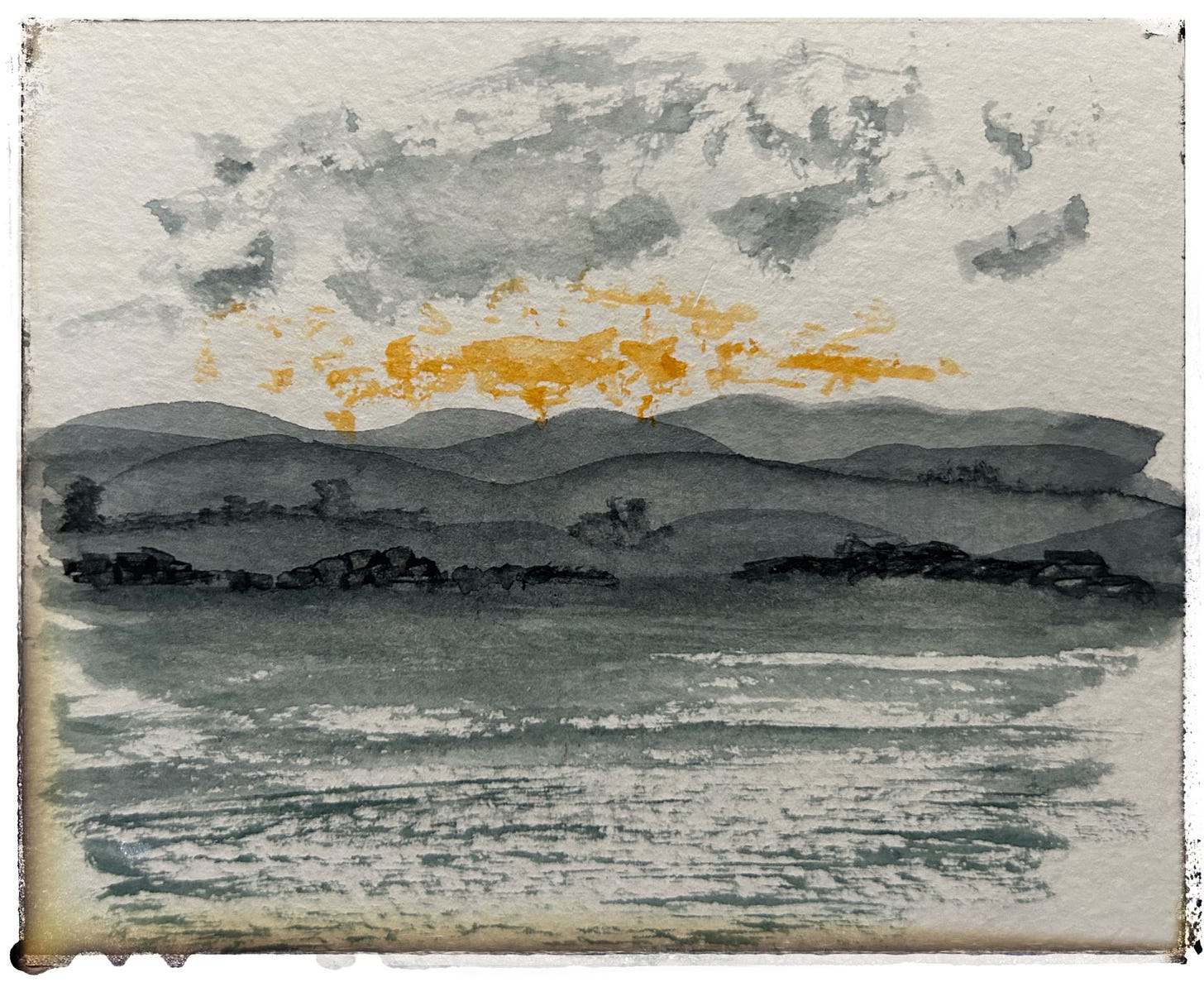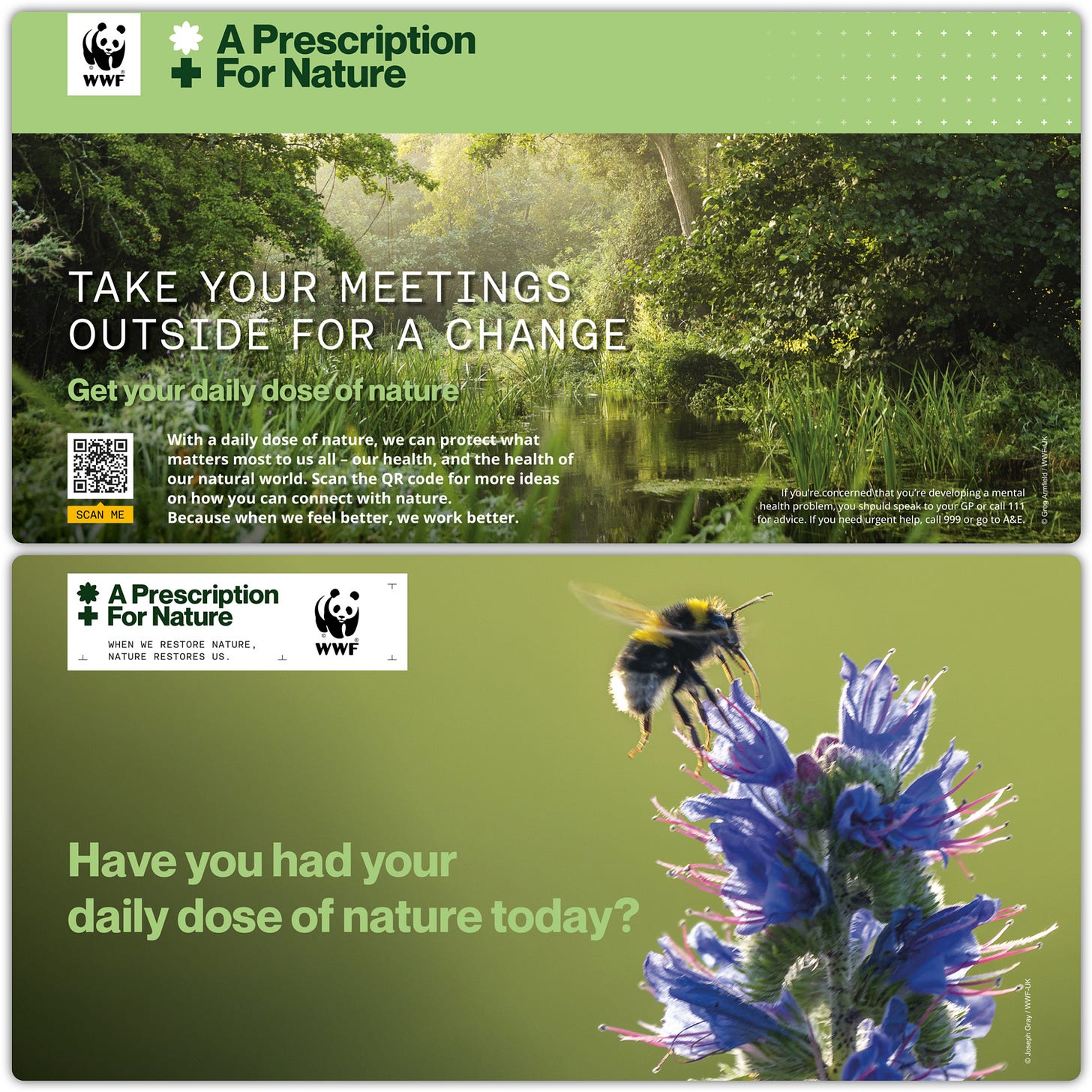As the season turns.

October. There is something magical about this time of year, autumn brings a real sense of change, in colours, temperatures and light. It is a time of year when it is easier to see and be aware of sunrise (just before 8 am here this morning) and sunset (minutes before 6 pm yesterday). I am drawn to both, here on our village green where we witness some amazing dawn light, or on our local Beacon Fell which is increasingly attracting sunset watchers.
Linking these earth rotation bookends of the day into a walk is a real treat and tonic, particularly when finishing the walk home in the dark with clear skies of Bowland overhead.
This time of year is significant for some as Samhain. Traditionally beginning at sunset on October 31st and continues until sunset on November 1st. This Celtic festival marks the end of the harvest season and the beginning of winter, or the "darker half" of the year. As one of the four major seasonal festivals in the Celtic calendar, is considered by many to be the Celtic New Year.
Time to Connect
As subscribers and readers here will know,I curate and facilitate biophilia/c or connecting with nature walks for groups. In particular ‘Disconnect/Reconnect’ encourages participants to switch off from devices and connect with natural signs to navigate a random route through nature.
In a business setting this provides time and space in nature to reflect, to ask questions and hold conversations. For built environment projects, this can be a powerful way of understanding the feelings and emotions we experience when in nature and then exploring how best to incorporate into designs that will inspire, and foster good health and an improved stewardship towards nature from those in our buildings.
Helen Thomson’s must-read article in the Guardian earlier this month detailed her brilliant one-day Ultimate Health Walk starting with the circadian light of dawn and finishing with the awe of dark skies. And, without reference to biophilia terms and concepts, the components of her beautiful route perfectly capture the essence of biophilic patterns and attributes,
"I only went out for a walk and finally concluded to stay out until sundown, for going out I found, was really going in." John Muir
The Ultimate Health Walk
(extracts from ‘Nature is free, and the best kind of medicine’: is this the perfect walk for improving mental health? in italics)
It has been found that certain natural elements – particular flowers, landscapes and scents – can boost the brain more than others. Using these new insights, I scoured the UK to find the ultimate mental health walk. It is around 24km (15 miles), needs no orienteering skills and begins at 8.15am in Kielderhead national nature reserve, three miles from the Scottish border near Kielder, one of the most remote villages in England.
Light
Our hike begins early, not just because of its length, but because bright light first thing in the morning is a key step in ultimate wellbeing.
Light affects our circadian rhythms, the internal metronomes that anchor us to our 24-hour day, and studies show that getting a good dose of sunshine in the morning helps us sleep at night.
Cold Water
a short detour into the nearby woods will lead you to Hindhope Linn, a small but enchanting waterfall
Studies show that five minutes of cold-water immersion triggers physiological reactions that reduce fatigue, lessen symptoms of depression and elevate mood.
Soft Fascination
The tall walls of Sitka spruce and Scots pine are bordered by tufted hairgrass. Together, they form the perfect palette, not just in their beauty, but because small studies suggest that yellows and greens have the strongest effect on neuronal activity associated with a calm state.
The power of nature to focus our attention and decrease our stress levels is not just about its pleasing aesthetics but ties in with an idea known as attention restoration theory. During the day, we direct our attention to a number of tasks – reading emails, writing reports, scheduling meetings, all the while ignoring distractions. It’s what’s known as “top-down attention” – our thoughts direct our actions. But this attention is cognitively exhausting so we can’t sustain it for long and quickly lose focus and self-control. Nature triggers what’s known as “soft fascination”. It contains stimuli that catch our attention and are less cognitively demanding – creating what’s known as “bottom-up attention”; this gives the brain a chance to recover.
Scents
I chose a walk with plenty of pine and spruce because they release two particularly interesting VOCs: pinene and limonene.
Studies show that these chemicals reduce cortisol, lower blood pressure and boost mood. Spending at least 20 minutes in the woods will have an effect, but Antonelli recommends longer. “Spend six hours among the trees and you’ll see beneficial effects for days,” he says. “Spend days in the forest and the effects can last a month.”
Fractals
... straight on to wide open moorland. The view is spectacular. I spent hours pouring over maps and satellite imagery to find a landscape exactly like this. Not because of its beauty, but for its fractal dimensions.
... these landscapes generate brainwaves associated with relaxation and focus, while dampening those associated with fatigue, making them ideal for mental wellbeing.
BioDiversity
The landscape is now more varied: larch, birch, rowan, cherry, beech and willow join shrubs and wildflowers.
This biodiversity was another appealing aspect of the area. Researchers found a link between the diversity of trees and birds and the mental health ...The reason may in part be our microbiome – the bacteria, viruses and fungi that live in our guts and influence our mental health. Some studies suggest exposure to diverse environments at least in the short term – enrich the microbiome, which could help improve mood and reduce risk of conditions such as depression.
Blue Spaces
... As we get lower, we pass small tributaries, flowing towards Kielder Water, northern Europe’s largest human-made lake.
... living near blue spaces increases our mental wellbeing more than living near green spaces – although the best scenario according to their work is living somewhere where the two meet.
Awe
... it is as the sun sets, however, that we discover why this walk is truly special. Kielder is at the centre of one of Europe’s largest areas of protected night sky.
... you have a high chance of experiencing awe, which scientists have recently come to agree has a host of benefits. Awe fosters wonder, your self dissolves and you feel part of something much bigger. (psychology research) shows that this makes people happier, less stressed, calms our fight or flight response and even reduces inflammation, which is associated with mood imbalances.
Note - please do read Helens article for more details on the Health and Psychology resaerch mentioned in the extracts.
Practicals …
If you are looking to explore biophilic benefits in your spaces or buildings, allowing staff time for a walk as described above can provide much greater (and instant?) benefit than low-key biophilic design interventions.
If you are looking to combine walks such as those described here with team building, leadership, design sessions, project designs, workshops or conferences please do reach out for a conversation.
WWF UK has launched a wonderful programme, A Prescription For Nature Just 20 minutes in nature each day can improve your mental wellbeing (Restoring Nature to Restore Ourselves) with packs full of free advice and posters for individuals, office or schools.
Join our (Living Future Europe) Biophilia Society, connect with others around the world under the vision that ‘connecting with nature will save our society” The next session will host Don H Ruggles: Beauty, Neuroscience & Architecture: Timeless Patterns & Their Impact on Our Well-Being. on the 28th October
Zoom Regenerative: The current season is around exploring the soul of who we are in the built environment, Our last gathering explored the soul at the core of building layers with Ann Vanner. Our next, on November 19th will be with Nicole Craanen, exploring sensitivies and HSPs.





